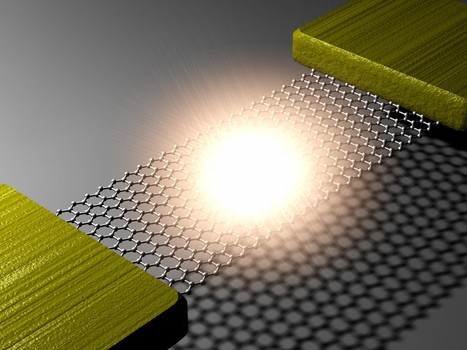Young Duck Kim, a postdoctoral research at Columbia Engineering, a team of scientists from Columbia, Seoul National University, and Korea Research Institute of Standards and Science reported the development of the first thinnest working light bulb made from graphene in the edition of the journal Nature Nanotechnology. The development paves the way for the use of extremely small light sources in electronic devices and solves many of the problems involved with high-speed computing. The researchers proved that the manufacture of grapheme light bulbs is scaleable to commercial sized production using present manufacturing processes.
The grapheme light bulb is physically simple. An atomically thin strip of graphene is connected to an anode and a cathode and suspended in a silicone substrate. The light source produces light at temperature exceeding 2,500 degrees Celsius. The high temperature provides sufficient energy for the light to be visible without any other amplification or equipment. The spectrum of light that is produced encompasses the visible range that humans can see.
One advantage of graphene light bulbs is lower heat production. Graphene localizes the heat source as it achieves higher temperatures. This property assures longer life for the light bulb and eliminates the damage from heat to other electronic components. The transparency of graphene makes the light bulb both cooler and more efficient than conventional light bulbs. The expected results are smaller, faster electronic displays that have a longer lifetime. The heating capacity of graphene light bulbs is also expected to produce more efficient and less expensive sources of heat for cooking, heating, and industrial process heating.















